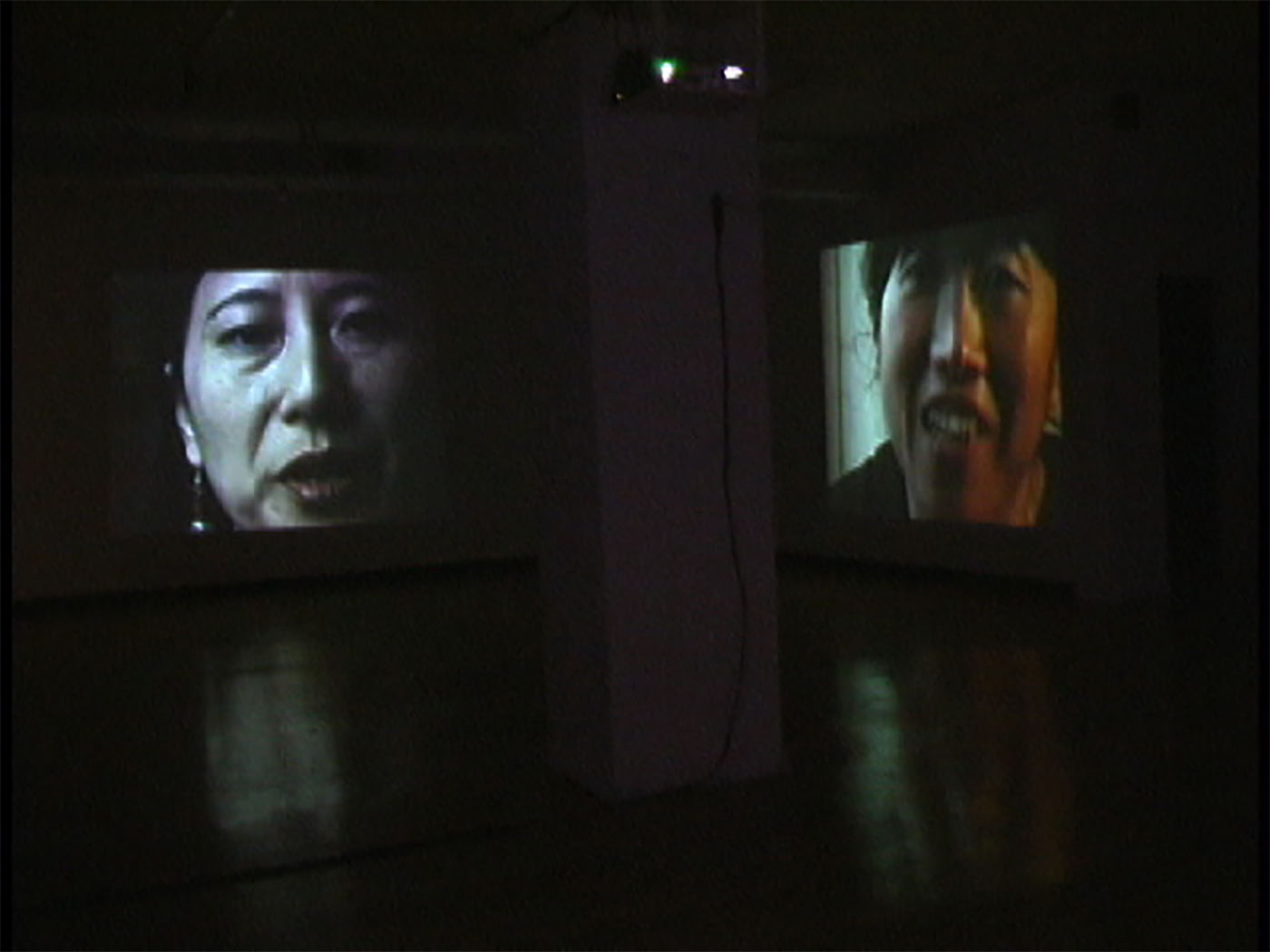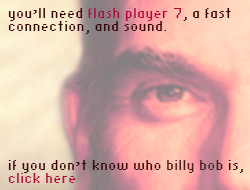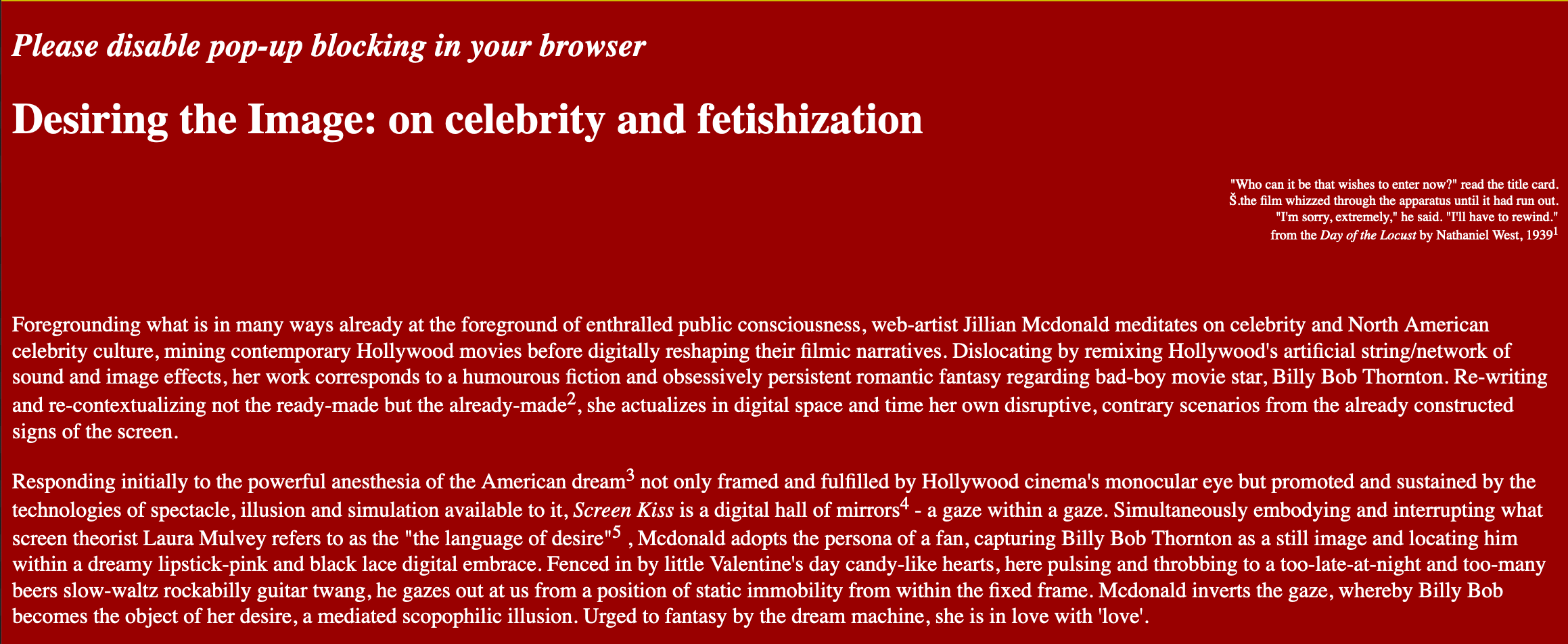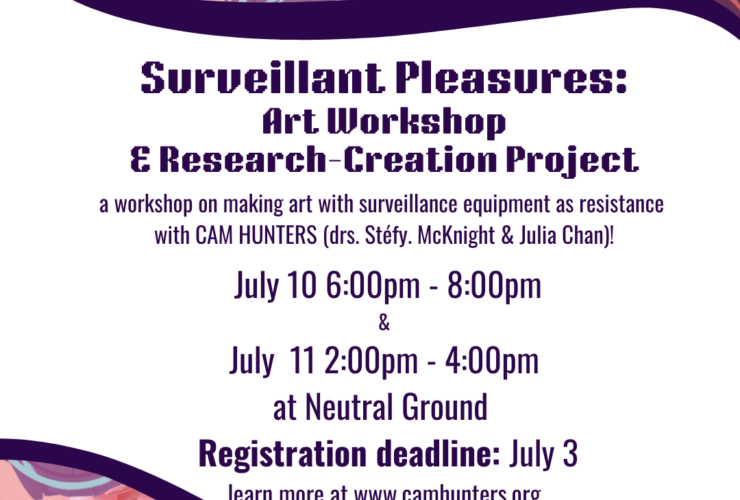February 1 – September 1, 2005
Katherine Liberovskaya: Babel On
Adam Hyde: Radio Astronomy and re:mote regina
Toby Heys and Robert Saucier: Infrasense
Ian Birse and Laura Kavanaugh: Collector
Marc Fournel: Transduction
C0C0S0L1DC1T1: Rounding Error, Broken Channel, Ghost Storeys
Jillian Macdonald: Screen Kiss
Huong Ngo and George Monteleone: Self Science Research Institute
David Floren: Whorl
Michael Stecky: Perfectly Normal
cache-cachet
Cache-Cachet is a series of new media solo exhibitions and projects that presents a diverse range of new media practices and production methodologies in interconnected places. The series includes an interactive, robotic exhibition, live performance, Web launches, a locative media project, audio installation, audio lab, an experimental symposium and two international visiting artist residencies.
Cache-Cachet points directly to aspects of technological fetishization, planned obsolescence, the ubiquitous proliferation of technologically based tools and artistic practices, the significance of pop art in the historical trajectory of contemporary art and the ambiguities in collecting, preserving and archiving encoded, variable media.
Works in the series host a number of visiting artists in Regina to examine the currency of variable media, encoded media or new media artwork which includes browser art, software art, interactive technologies, digital cinema, audio art, robotics, interactive installations, and others. A subsequent series will emphasize the performative nature of new media and performance within the lexicon of post humanism and performance art, based on works that are both performed and/or networked.
The computer cache is a repository of images, sounds and other resources and a phenomenological space that facilitates where an individual’s cache files are materially accumulated and facilitates the process of reading documents found online. Works in this series are in some way encoded works, or, works that have in some way used the computer in their creation and have accumulated a browser history, an archive or a memory.
The projects are presented as a series to formulate the groundwork for a dialogue about the criticality of new media work, the formal concerns and historical hypothesis of new media arts practices that are neither entirely performative nor static, neither entirely process or production based but linked by a succession of events, objects or actions to heighten the interpretive possibilities for the works.
Work in the series uses technologically based practices to identify, explore or otherwise analyze uniquely psychological spaces or conditions that characterize human behaviour, subjectivity, emotional intelligence and communications. The series asks whether new technologies are introducing a temporary cachet into social architectures or what can more accurately be understood as a permanent change to our ways of perceiving and structuring the world.
“Transduction” is based on experimental ideas about the desire for psychological transference or extension and the use of audio interfaces to achieve it.
Using their connection to satellites in orbit, “Satellite Bureau”, “Radio Astronomy” and “Whorl” are projects that function on a stratospheric scale to extend connectivity and to work with the notion of scale in new media art.
“Satellite Bureau” is a locative media project that utilizes formal concepts and ideas including perspective, space, time and distance as a way for collecting human intelligence and connection to other human beings and to place.
The gallery installation, “Infrasense” talks about the concept of ‘Telepistomology’, a term used by Ken Fiengold to explain the knowledge shift in late twentieth century codes of learning and living and suggests that the majority of information we gather about the world around us is delivered to us by the TV, Internet, telephones and fax machines. Telepistomology also asks how the Internet can be used to construct alternative models of socially spatialized dynamics.
“Babel-On” is an experiential piece about connectivity that operates from a viewpoint that evokes the non-verbal possibilities of vocal communication, suggesting various relationships between diverse geo-political regions, cultural traditions and civilizations.
“Ghost Storeys” retells the stories of old architectural structures using the metaphor of supernatural and ephemeral existences applied to contemporary structures and conditions.
“Screeen Kiss” highlights the notion of transference of desire in the realm of cult celebrity. Other Web projects “Perfectly Normal” and “Self Science Research Institute” are diagnostic research projects created for the Web.
Cache-Cachet will take place over a period of time in distinct and sometimes interconnected places. The commissioned net art works will remain online for a minimum of three years and the satellites are intended as permanent installations in the media lab.








